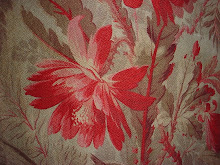









I recently obtained a batch of the most exquisite panels, some research dates them to the 17th century, some possibly earlier... They most likely came from east Europe or Russia, the panel with the Romanov double-headed eagle suggests a Russian origin. The work is incredibly fine, the condition superb. It never ceases to amaze me how textiles can survive for so long, probably why I am so enthusiastic when I find early pieces.



































































































Yes, it always amazes me as well how some things survive and others disintegrate. I think linens can be more sturdy than other pieces though. Were some of these pictured in a book or rather similar ones? I think this kind of thing is hard to identify as compared to a textiles that is printed or woven with color and more vivid design.
ReplyDeleteI agree, it is much harder with these type of textile to be sure about date etc, I have only recently become more confident with this sort of textile after handling and studying some original pieces, you can't beat hands on, and once early linen has been felt, there is no mistaking it, I could tell the difference blind-folded! I use books, the V&A museum image library and in this case, a brilliant website that sells top range lace & whitework, and while price-wise it is all way out of my league, it is brilliant for identifying similar textiles, as the sellers are incredibly experienced with an excellent reputation: http://www.mendes.co.uk. If you look at the pieces in their archive page you (scroll down through masses of fans & costumey bits) will see some similar textiles! I am convinced that most of these pieces are 17th century, but a couple may be 18th. My research is ongoing, and is often revised in the light of new information, that one of the reasons why I find textiles so exciting!
ReplyDelete